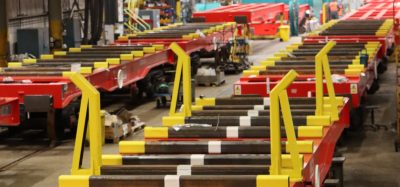Upgrading the Ringsted–Fehmarn Line: a huge construction job
Posted: 23 May 2013 | | No comments yet
The upgrading of the Ringsted–Fehmarn Line is one of Banedanmark’s largest ever projects. Together with the fixed link across the Fehmarn Belt and other major Danish infrastructure projects such as the Copenhagen–Ringsted Line, this is a massive scheme for both rail freight and passenger traffic.
The upgrading of the Ringsted–Fehmarn Line is one of Banedanmark’s largest ever projects. Together with the fixed link across the Fehmarn Belt and other major Danish infrastructure projects such as the Copenhagen–Ringsted Line, this is a massive scheme for both rail freight and passenger traffic.
The upgrading of the Ringsted–Fehmarn Line is one of Banedanmark’s largest ever projects. Together with the fixed link across the Fehmarn Belt and other major Danish infrastructure projects such as the Copenhagen–Ringsted Line, this is a massive scheme for both rail freight and passenger traffic.
The Ringsted–Fehmarn Line begins in Ringsted in the middle of Zealand, just over half an hour from Copenhagen. From here, it extends southwards through the pleasant Zealand landscape and the towns of Næstved and Vordingborg, and crosses the bridges over Masnedsund and Storstrømmen as far as the island of Falster. It then runs to Nykøbing Falster and via Frederik IX’s Bridge to the flat landscape of the island of Lolland. It currently ends in Rødby Havn, from where the ferries have, for years, taken people and goods to Puttgarden.
The decision to establish a fixed link across the Fehmarn Belt has, however, also prompted a need to upgrade Ringsted–Fehmarn so that trains in the future can accelerate to 200km/h. A few kilometres from the current Rødby Havn, the line will be linked to the rail facility that forms the northernmost part of the fixed link.







